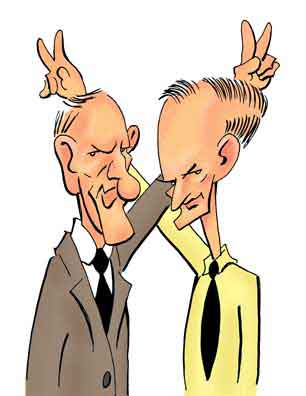Sir Robert Robinson and Sir Christopher Ingold

What's interesting about Sir Robert Robinson and Sir Christopher Ingold is how little they are known even to chemists. I mean, look at Sir Robert: Professor at Oxford, Fellow of the Royal Society, Nobel Prize winner. Sir Christopher: Professor at University College, London, Fellow of the Royal Society, winner of the Royal Medal. Why don't even more chemists know about them?
Now lest this last paragraph raise the ire of chemists who not only hold Sir Robert and Sir Christopher in high regard but regard them as true chemical icons, we ask them to randomly sample your friendly neighborhood chemists - not just college professors - and ask them who these two gentlemen were.
Now some may think a minute and say, "Oh, the Robinson annulation", which they probably learned in their second organic chemistry course. And maybe they'll really search their memories and say, "Oh, yeah. Aren't there some kind of So-and-So/Ingold or Ingold That-and-Those Rules?".
Now it wasn't that Sir Robert was the first modern natural product chemist nor that Sir Christopher was the originator of all those incomprehensibilities for Organic Chemistry 101 like SN1, SN2, E1, E2, and even the now ubiquitous symbols δ+ and δ-. But it was when you began to mix these gentlemen together that you got ...
Well, admittedly chemistry is not an area most people associate with fiery personality and controversy. But it is Sir Robert and Sir Christopher we can thank for getting about as close to controversy as you can. There are actually books on the history of chemistry where you can read about their - ah - debate. But many of these books, we must admit, are not that common or - as is increasingly the case for scientific books - way, way, WAY overpriced. So you can learn a bit how Sir Robert and Sir Christopher began to duke it out - chemically, that is - for half a century, if you just click here.